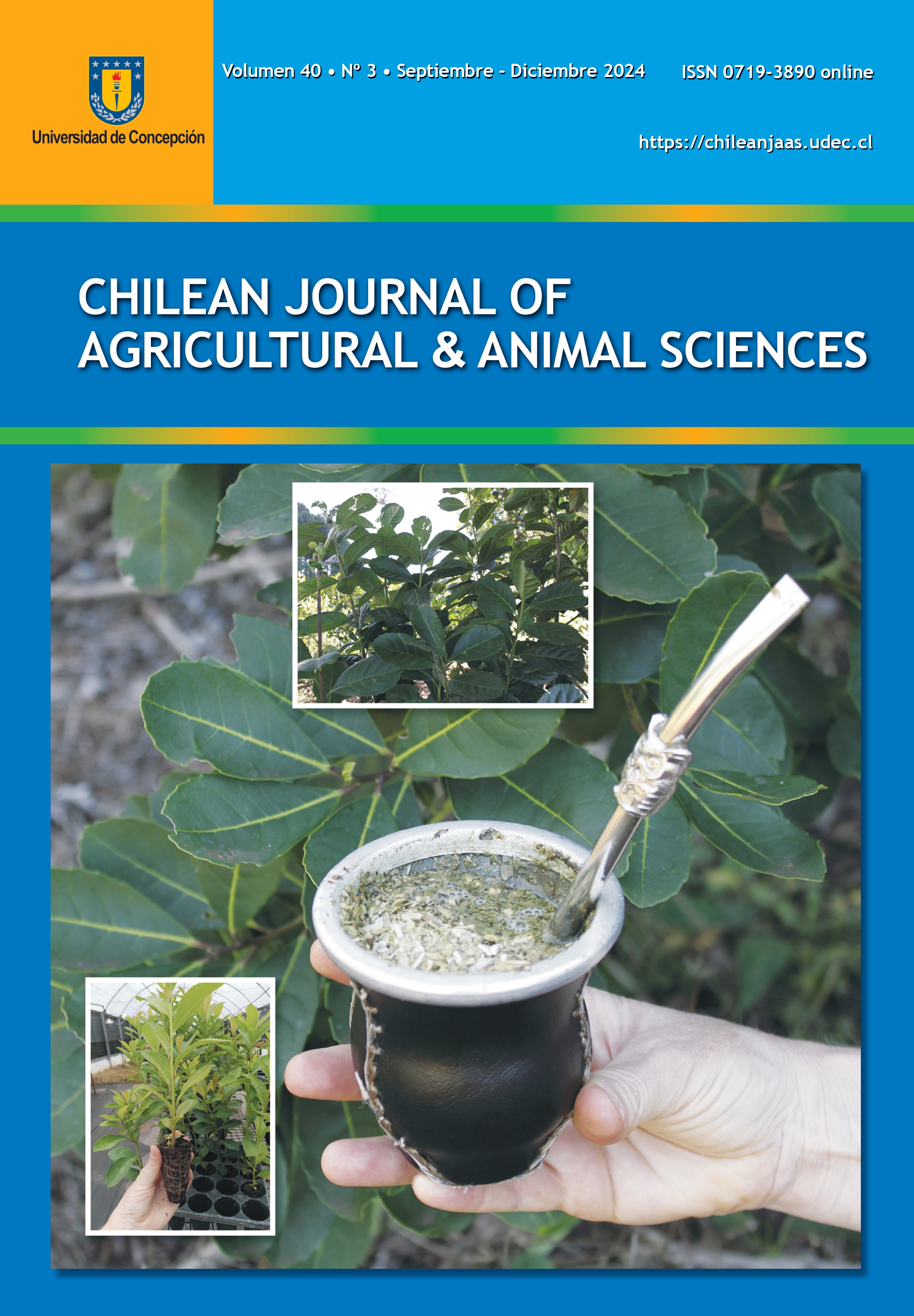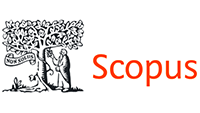FEED UTILIZATION EFFICIENCY AND NITROGEN BALANCE IN DUAL PURPOSE COWS FED LOCAL DIETS IN THE SUBHUMID TROPIC OF MEXICO
DOI:
https://doi.org/10.29393/CHJAAS40-52FUDA60052Palabras clave:
maize silage, dry season, family livestock, milk production, supplementationResumen
The objective of the study was to evaluate the effect of different levels of maize silage on feed utilization efficiency and nitrogen (N) balance in dual-purpose cows during the dry season. Nine crossbred cows with live weight of 423±12 kg were used. The treatments were: T1= 2 kg DM of maize silage + 3.9 kg DM of sorghum stubble; T2= 4 kg DM of maize silage + 1.8 kg DM of sorghum stubble; T3= 6 kg DM of maize silage. Additionally, all cows consumed Panicum maximum cv. Mombasa grass, supplemented with poultry manure and commercial concentrate in doses of 2.0, 2.9 and 2.3 kg DM, respectively. Data comparison was performed by ANOVA, and the experiment was conducted using a completely randomised mathematical model with three replicates. No significant differences (p >0.05) were observed for any of the variables evaluated. N intake reached 279.8 g day–1 of which 8.5% was excreted in milk, 42.1% in faeces and 41.2% in urine. Milk production was 4.4 kg cow–1 day–1, with 33.1 g kg–1 fat and 34.4 g kg–1 crude protein (CP). N balance was 27.5 g cow–1 day–1, while utilization efficiency reached 8.6%. A higher inclusion of maize silage increased CP and N contents of the diet supplied to the cows, but it did not result in higher milk production. Feed utilization efficiency was limited even in the treatment with the lowest N content in the ration (T1). Further research is required to evaluate the economic and productive viability of the dietary inclusion of different silages, as a feeding strategy to cope with the low availability of forages during dry periods in low-scale milk production systems.
Descargas
Publicado
Cómo citar
Número
Sección
Derechos de autor 2024 Dixan Pozo Leyva, Fernando Casanova Lugo, Felipe López González, Alvar Cruz Tamayo, Ricardo Costa, Alfonso Chay Canúl

Esta obra está bajo una licencia internacional Creative Commons Atribución 4.0.







